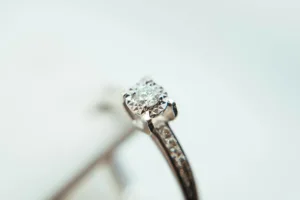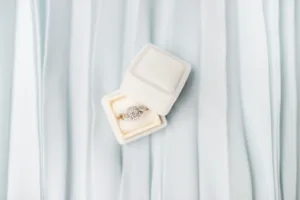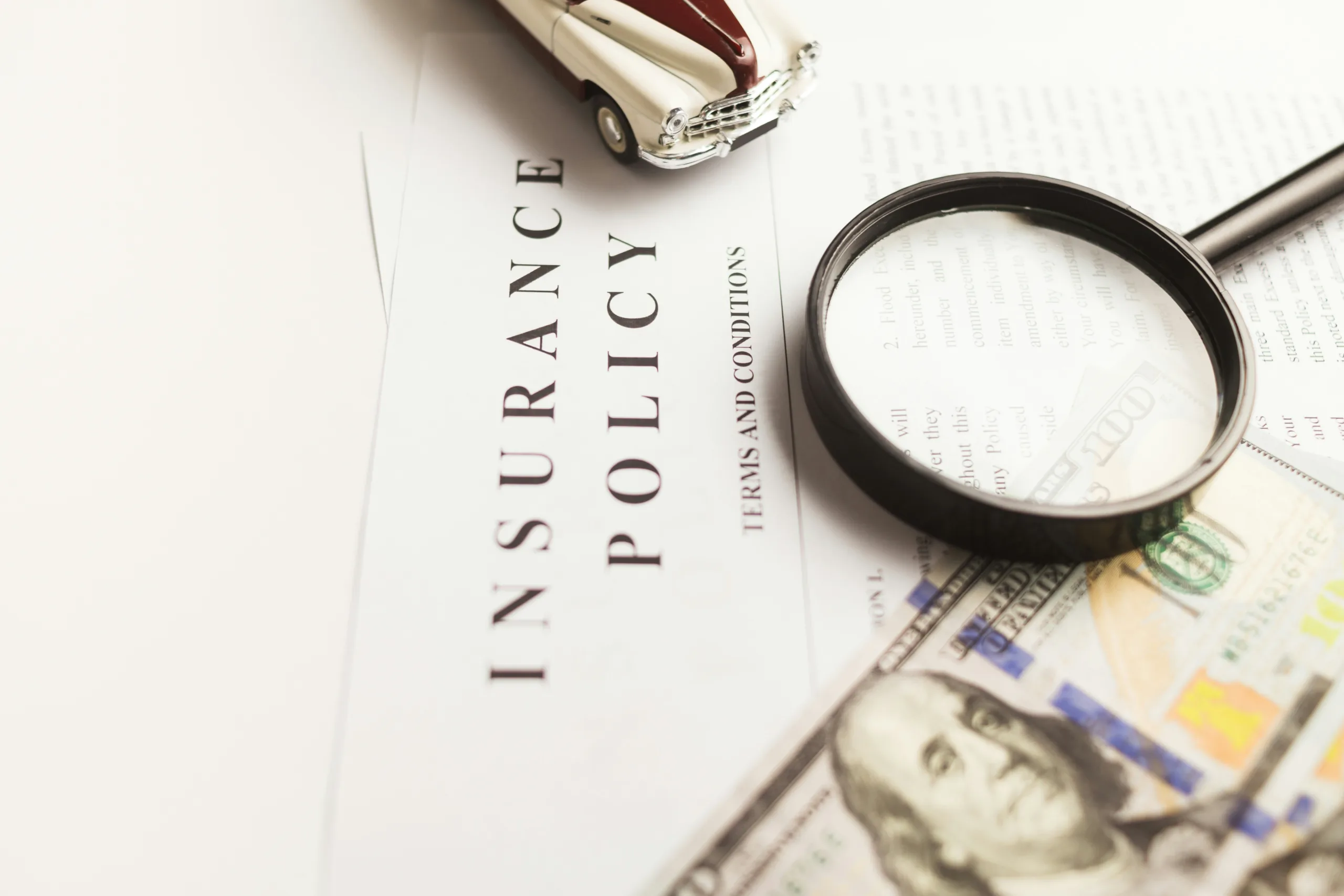In the whirlwind of love, excitement, and planning that accompanies engagements and weddings, one crucial aspect often goes overlooked: ring insurance. With the significant emotional and financial investment in engagement and wedding rings, it’s paramount to ensure their protection. Ring insurance isn’t just a safety net—it’s peace of mind. But what does it involve, exactly? Let’s delve into the intricacies of ring insurance with JewelryBro, highlighting its importance and how to navigate the process effectively.
Understanding Wedding Ring Insurance
At its core, insuring an engagement ring is a policy designed to protect your precious ring against unforeseen events such as theft, loss, or damage. Much like any other form of insurance, it’s a means of safeguarding not just a significant financial investment but also an item of immense personal value. Securing a policy means that, should the worst happen, you’re not left bearing the financial brunt of replacing or repairing your cherished piece.
What Does Engagement Ring Insurance Cover?
Wedding ring insurance is designed to provide comprehensive protection against a variety of risks. A robust policy typically includes coverage for:
- Theft: If your ring is stolen, insurance can cover the cost of replacement or reimbursement.
- Loss: Whether you lose your ring in the ocean or it slips off your finger without notice, insurance can help replace it.
- Damage: Accidental damage, such as a chipped diamond or a bent setting, is covered. This ensures that your ring can be repaired or replaced to its original glory.
- Disappearance: Sometimes, you might not know how the ring was lost. If it simply vanishes without explanation, a good policy can still cover it.
Specifically, most policies offer:
- Repair or replacement coverage: If your ring can be repaired, insurance will cover the cost. If not, they’ll replace it.
- Coverage for various locations and travel: Whether you’re at home or traveling abroad, your ring is covered.
- Customized and heirloom piece coverage: Special provisions for pieces that have unique or irreplaceable value.
It’s important to note that the specifics can vary between insurers, so reviewing the details of what’s covered is crucial when selecting a policy.

What Does Ring Insurance Exclude?
Understanding what your engagement ring insurance policy does not cover is just as important as knowing what it does. Common exclusions include:
- Wear and Tear: Over time, all jewelry experiences some degree of wear. Insurance typically does not cover gradual deterioration, such as thinning bands or claw wear that leads to a stone falling out.
- Intentional Damage or Loss: Any damage or loss that results from intentional actions (by the insured or others) is not covered.
- Partial Loss or Damage: Some policies may not cover partial damage, such as minor chips or scratches, or the loss of a small stone from the setting.
Exclusions often include:
- Negligence: Loss or damage resulting from negligence (e.g., leaving your ring in a public bathroom) might not be covered.
- Natural Disasters: Certain policies may exclude damage from natural disasters, such as earthquakes or floods unless specific additional coverage is purchased.
- Acts of War: Damage or loss due to acts of war or civil unrest is typically excluded.
When choosing a ring insurance policy, it’s crucial to ask about specific exclusions. Ensure you understand what scenarios are not covered to avoid surprises in the unfortunate event of a claim. This knowledge allows you to take additional precautions to protect your ring in situations that fall outside your policy’s scope.
How much does engagement ring insurance cost?
The cost of insuring ring insurance varies, generally ranging from 1% to 2% of the ring’s value, annually. This means that a $5,000 ring could cost around $50 to $100 per year to insure. The final rate depends on various factors, including the ring’s value, the coverage scope, and even your geographical location. It’s a small price to pay for the assurance that your investment is protected.
Who Should Consider Wedding Ring Insurance?
Insuring engagement rings isn’t just for the affluent; it’s a wise choice for a wide range of individuals. Consider getting ring insurance if you fall into any of these categories:
- Owners of High-Value Rings: If replacing your ring would be a financial burden, insurance is essential.
- Frequent Travelers: The more you travel, the higher the risk of losing your ring.
- Active Lifestyle Enthusiasts: Engaging in sports or outdoor activities increases the risk of damaging or losing your ring.
- Heirloom and Custom Ring Owners: Unique rings that carry sentimental value are irreplaceable, making insurance particularly important.
- Those Prone to Losing Items: If you’re known for misplacing your belongings, insuring your ring can save you a lot of stress.
- Residents of High-Risk Areas: Living in areas with high theft or loss rates means your ring is at greater risk.
- Those with Sentimental Attachment: Even if the ring isn’t highly valuable, its sentimental worth may justify getting insurance.
- Individuals Without Comprehensive Homeowner’s or Renter’s Insurance: If your current policy doesn’t fully cover your ring, consider a separate ring insurance policy.

Selecting the Right Insurance: Key Considerations
Choosing the perfect insurance for your engagement ring isn’t just about signing up for the first policy you come across. It requires thoughtful consideration to ensure your cherished piece is adequately protected against the unforeseen. Let me walk you through a detailed guide to make the selection process a breeze:
- Assess Coverage Needs
- Comprehensive Coverage: Ensure the policy covers a broad spectrum of incidents, including theft, loss, damage, and accidental misplacement.
- Geographical Coverage: Check if the insurance provides global coverage, especially important if you travel frequently.
- Replacement vs. Cash Settlement: Understand if the policy offers to replace the ring, perhaps through a specified jeweler, or if it provides a cash settlement. Your preference could influence your choice.
- Understand Policy Details
- Deductibles: Some policies might require a deductible, which is the amount you pay out of pocket before the insurance kicks in. Weigh the cost of the deductible against the premium and the overall value of the ring.
- Appraisal Requirements: Note if an appraisal is necessary to secure coverage and how often it needs to be updated. An accurate appraisal ensures your ring’s value is correctly assessed and covered.
- Policy Exclusions: Be clear about what the insurance does not cover, such as wear and tear or negligence, to avoid surprises in the claim process.
- Compare Insurers
- Reputation and Reliability: Research insurers to gauge their reliability, customer service quality, and claims process efficiency. Look for reviews or testimonials from other customers.
- Claims Process: A straightforward and prompt claims process is crucial. Investigate how claims are handled, the typical timeline for settlement, and any required documentation.
- Adjustability and Flexibility: Consider whether the policy can be adjusted over time, such as increasing coverage as the value of the ring appreciates.
- Financial Considerations
- Premiums: Compare the cost of premiums among different insurers, keeping in mind that lower premiums might mean less coverage or higher deductibles.
- Valuation Method: Understand how the insurer determines the value of your ring and the impact it has on both premiums and potential claim payouts.
- Consult with a Professional
- Insurance Agent or Broker: Speaking with a professional can provide clarity and help you navigate the intricacies of ring insurance. They can offer personalized advice based on your specific situation.
- Read Reviews and Seek Recommendations
- Customer Feedback: Online reviews and recommendations from friends or family who have insured jewelry can offer valuable insights into their experiences with insurers.
- Documentation and Safekeeping
- Keep Records: Once you’ve chosen a policy, keep all related documentation, including the appraisal and photographs of the ring, in a safe place. These will be invaluable in the event of a claim.
Insuring an engagement ring might seem like just another item on the endless list of wedding preparations, but its value cannot be overstated. It’s about protecting not just a significant financial investment but a symbol of love and commitment. With the right policy, you can ensure that your cherished symbol of affection is safeguarded against the unpredictability of life, allowing you to focus on what truly matters: your journey together.

